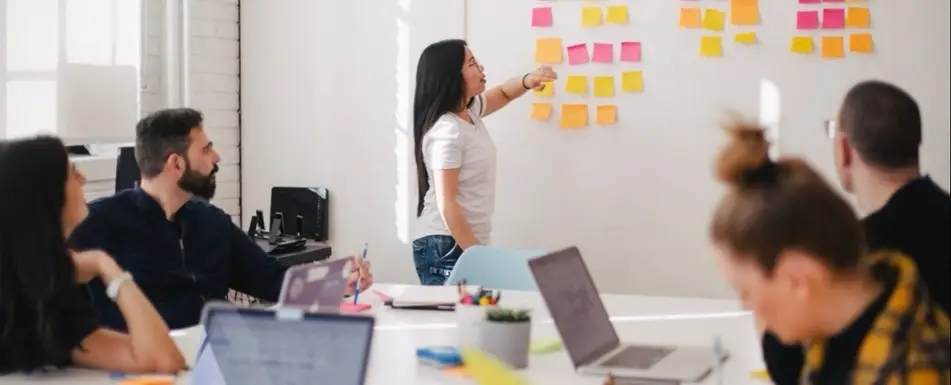Convergent Thinking | Beyond the SWOT Analysis, Part 2

Last month, I wrote about the benefits of divergent thinking, the kind of creative thinking that allows you to expand your list of options and explore all angles to a situation. You use divergent thinking when you need to change up the status quo. The result is a large number of possible solutions to your challenge, including some potentially great ideas and some totally useless ones.
But how can you separate the gems from the duds? Introducing: convergent thinking.
Convergent thinking defined
Convergent thinking is the process of refining potential solutions, culling options, finding the right answer, and making a decision. As described by Nancy Duarte, author of Resonate: Present Visual Stories that Transform Audiences, “divergent thinking generates ideas, while convergent thinking sorts and analyzes these ideas towards the best outcome.” At the end of a convergent thinking process, you’ll have a vetted idea that is ready for execution.
Remember, both divergent and convergent thinking are important for creative thinking. A hybrid approach is often necessary for balanced development of your ideas:
“...techniques that emphasise convergence in the absence of prior divergence...may lead to premature closure of debates about strategic direction or other challenges facing the organisation, with the result that suboptimal decisions may be taken and political support for implementation not sufficiently developed. Approaches that are strong on convergence but weak on divergence run the risk of becoming routine annual rituals...where real, incisive insights...are not substantively pursued or expected.”
So consider divergent and convergent thinking the salt and pepper of creativity—they work best when they’re used together. And especially in a professional setting, using both approaches will result in more thoughtful, better considered decisions that are rooted both in brave possibility and down-to-earth reality.
When to use convergent thinking techniques
Let’s assume you have multiple opportunities per week to utilize your creative thinking skills. Maybe you're engaging the community in a new initiative, structuring a process that gets your product in the hands of your ideal users, or devising a multiyear strategic plan. If you’re using divergent thinking practices, you should end up with several potential ideas or solutions for your challenge.
But how do you know when it’s time to winnow down your ideas and make a decision? Maybe you’ve amassed an impressive set of options—perhaps even too many. Maybe some of your teammates seems eager to move forward. Or, more practically, perhaps you’re under a deadline to decide!
This is when you shift your focus to answering this question: “Of all of the ideas we’ve generated, which will most successfully meet our goal?”
Narrowing down to “the one”
Here are four ways to utilize convergent thinking exercises to fully explore a small set of options, narrow down your choices, and make a decision:
- Dot or sticker voting: Each person in the group gets a certain number of dot stickers to vote on their favorite options. Use this technique when you have fewer than six options and all of them are different enough to not confuse the results.
- How-Now-Wow Matrix: This exercise illuminates ideas that are both original and easy to implement using a 2x2 matrix and sorting technique.
- Pluses, Potentials, and Concerns (PPC): PPC asks you to consider a single potential solution from multiple angles to understand the benefits of selecting it, what’s possible, and what concerns need to be addressed for this to become the best solution.
- Potential Problem Analysis (PPA): Similar to the “pre-mortem” technique you might already know, PPA can focus you on the risks of executing your idea, the probability that the worst will happen, and how to guard against it.
You can find several other engaging activities online to help you converge on a single idea and move forward. Once you do, try them out yourself or with a team. Soon, you just may find that you have earned the title of “Creative Thinking Superstar.”
Did you enjoy this post? There's plenty more where this came from! Subscribe here for updates.
Liz S. Peintner is a leadership coach and consultant based in Denver, Colorado who has spent her entire career in the social impact field. She helps people to better understand what drives them so they can choose careers they love and ultimately make positive social impact in ways that speak to their talents and passions.


